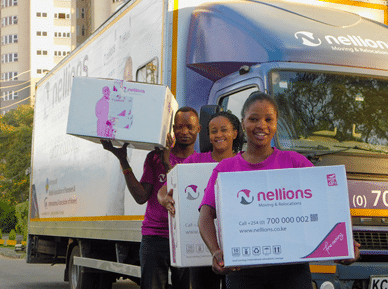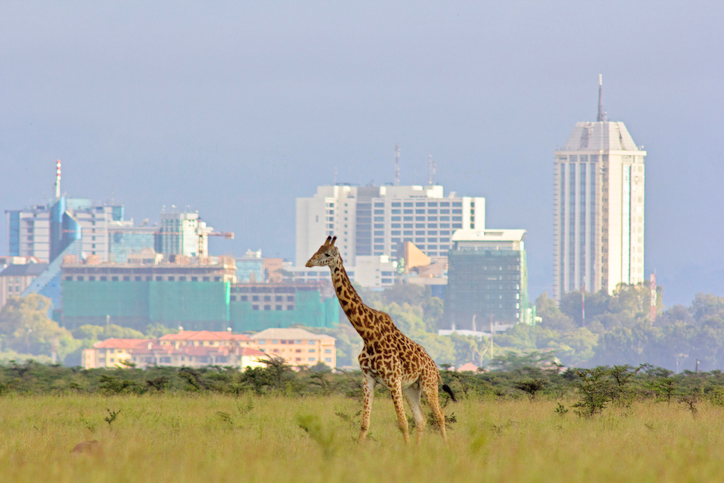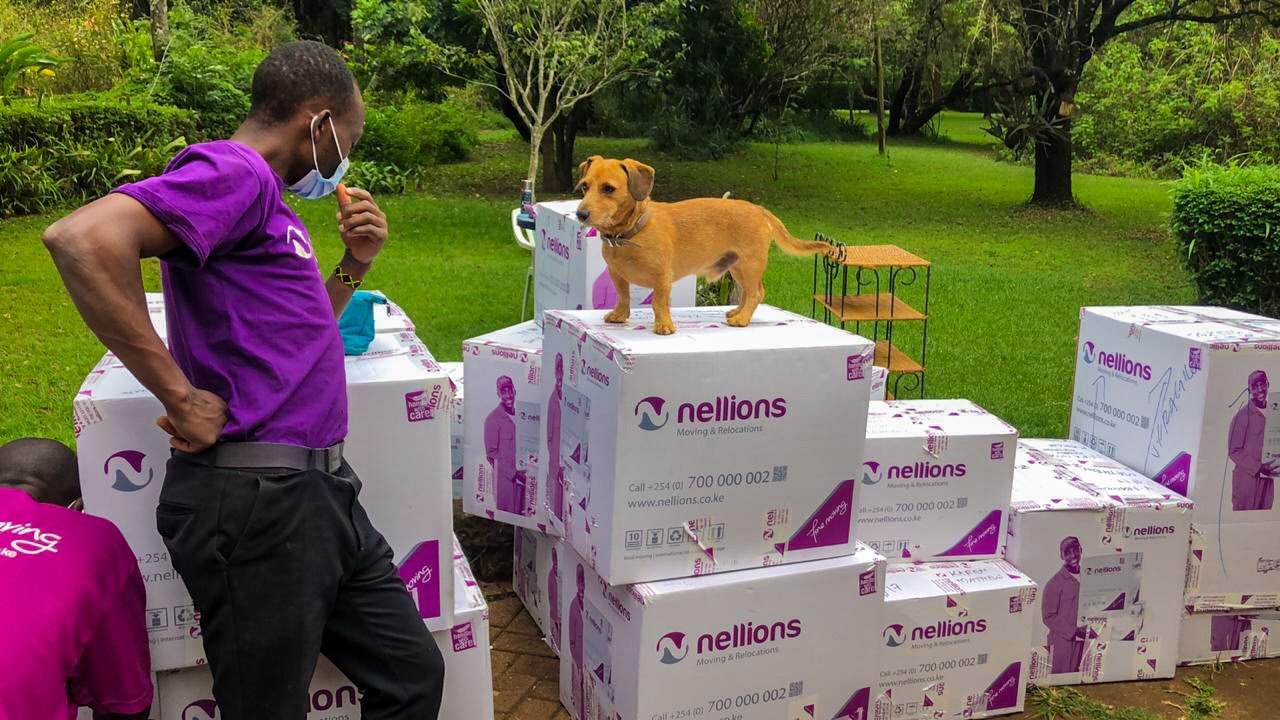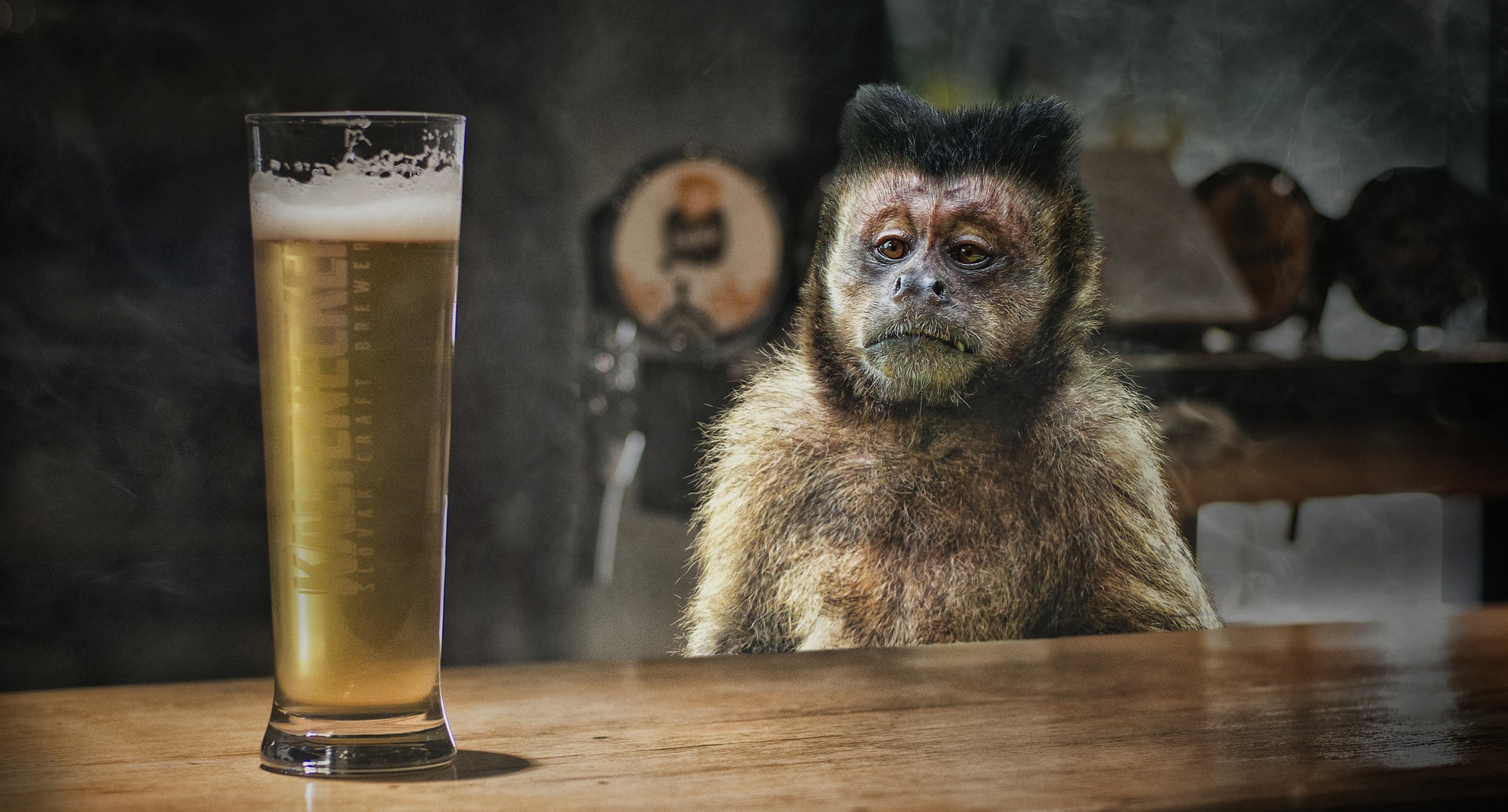Last updated on July 11th, 2022 at 06:15 pm
Kenya is a beautiful nation with spectacular scenery, amazing wildlife, and friendly people. Renowned for the popular wildebeest migration, the country packs a lot of pleasant surprises including a rich cultural heritage and a robust economy. As such, it hosts a ton of possibilities, both for living, career-wise, and investment opportunities.
Best of all, Kenya has beautiful towns, each with unique and attractive features that make for perfect destinations to establish a home.
But with so many cities available, each with a unique selling point, how do you choose the right one? Read on to find out!
1. Nairobi
Nairobi is Kenya’s capital city. It is known worldwide for being the only city with a National Park. Far from that, it is the country’s primal economic, administrative, and political hub.
History and Population
Nairobi dates back to the late 1890s when it was established as a British railroad camp for railway construction workers. It served as the British provincial capital from 1899 to 1905 when it became the capital of the British East Africa Protectorate (a name later changed to Kenya Colony from 1920 until it gained independence). After independence, Nairobi became the capital city of the Republic of Kenya.
The name Nairobi is associated with a Maasai phrase, e nai’robe meaning a place of cool water – Nairobi River, which lent the city its name. It has a population of 4,397,073, based on 2019 census stats from the Kenya National Bureau of Statistics (KNBS).
Cost of Living
The standards of living in Nairobi vary a lot. While most high-income earners live in the city, the majority of its dwellers are middle-class.
The many middle-class estates in Nairobi are differentiated by the neighborhoods, the amenities, distance to the CBD among others. Most large houses are found especially to the west of the city with Gigiri, Muthaiga, Langata, and Karen among the earliest to settle colonialists. Other middle- and high-income estates include Parklands, Westlands, Hurlingham, Kilimani, Milimani, Spring Valley, Lavington, Rosslyn, Kitisuru, and Nairobi Hill.
Based on Living Cost.org statistics, the monthly cost of living in Nairobi for a family of four is roughly KES. 215,800. However, this data is largely based on the prices crowdsourced by users. The actual cost may vary.
Why Live in Nairobi?
For one, Nairobi has good weather and beautiful people. About 95 percent of the population speaks English and Kiswahili. And apart from being the only city in the world with a national park, it has an urban forest known as Karura, which has myriads of trails for picnic and vacation enthusiasts. Karura Forest is popular with foreigners and the middle-class population who love jogging and excursions.
The city has a beautiful network of roads leading to all parts of the country. Other infrastructure includes the airports, the Standard Gauge Railway (SGR) to Mombasa, and reliable internet through fiber networks.
Moreover, it is home to a wide range of schools, both public and private, including international schools such as French, German, American, and British schools not to mention internationally recognized universities.
The city, being a cosmopolitan capital is racially and culturally diverse. This has been demonstrated by a ton of restaurants catering to every type of cuisine – Japanese, Chinese, Thai, Italian, Ethiopian, American, among others.
With a plethora of sporting grounds and recreational facilities around its suburbs, your golfing, jogging, tennis, soccer, and swimming needs are duly catered for.
There are also shopping malls, museums, movie theatres, and other cultural places for entertainment and catching up with the country’s history, its people, and so much more.
2. Nakuru
Nakuru is a fast-growing town in Kenya, which incidentally attained a city status making it the fourth one in the country after Nairobi, Mombasa, and Kisumu. It is also the capital of Nakuru County of which Naivasha is a part of and formerly the headquarters of the Rift Valley Province.
History and Population
Nakuru’s history can be traced to a prehistoric period due to the archaeological discoveries made about 8 kilometers from the town at Hyrax Hill reserve. It also derives its name from the Maasai community and was established by the British as part of the White Highlands during the colonial period. It continued its growth into a cosmopolitan city and became a township in 1904. By 1952, it had become a municipality.
Nakuru has a population of about 392,587 making it one of the largest urban centers in the Rift Valley.
Cost of Living
The cost of living in Nakuru, compared to Nairobi eases with things such as transport, rent, and fresh produce slightly dropping. Housing and accommodation also vary with the town having different estates for the middle-income earners.
This includes Section 58, Kiti, Langalanga, Pangani, Shabab, Bangladesh, Milimani, Lanet, Freehold, Free Area, Ngata, Bahati, London, Afraha, and many others. Most houses in these places are privately owned, but one can still get an affordable two-bedroom house for as low as Ksh. 8000.
For a family of four, the monthly cost of living in Nakuru is estimated at KES. 127, 600. This means that you are likely to spend half as much in Nakuru compared to Nairobi, especially since food prices are much lower.
Why Live in Nakuru?
Nakuru is a good place to live. There are no snarling traffic jams or the noise you’d find in Nairobi. But perhaps the most attractive thing is the wildlife. From black rhinos to the famed flamingoes, zebras, impalas, buffalos, and more, there is enough to feast your eyes upon.
The town has a variety of recreational places such as the Menengai Crater, Hells Gate, Lake Nakuru National Park, the castle of unrequited love; Lord Egerton Castle, or the Hyrax Hill, which offers a glimpse of the fossils that were discovered by the Leakey family.
Nakuru is also home to a good number of public nationals schools as well as international ones such as Greensteds, St. Andrews Turi, Kipepeo, Mustard Seed, Melvin Jones Lions, and Pembroke House International schools.
The city has various shopping malls and chains of supermarkets as well as some great hotels including the Sarova Woodlands, Ziwa Bush Lodge, The Alps Hotel Nakuru, and Sarova Lion Hill Game Lodge as well as sports grounds like Afraha Stadium, Rift Valley Sports Club, and a motor racing track.
3. Diani
Diani lies 45 minutes south of Mombasa and is the sparkling jewel of Kenya’s mesmerizing coastal life. It features beautiful beaches and an expanse of a turquoise sea.
History and Population
Diani was a fishing settlement for the locals; mainly fishermen, pastoralists, and subsistence farmers who led a quiet life here. After the First World War, European pioneers bought land and developed the hospitality industry in the region, upon which the economy of the area is largely focused today.
Over the years, the town has developed into a cosmopolitan resort town that attracts visitors from around the world. The town has over 100,000 inhabitants.
Cost of Living
Diani makes a perfect place to settle. Being a resort town, most houses are quite expensive and they range from beachfront stand-alone houses to apartments and penthouses.
Owners are mostly wealthy Kenyans, resort owners, and expats who have taken up permanent residence in Diani.
The town’s cost of living is very expensive, particularly because it is a holiday destination. If you are planning for a vacation, you should plan to spend an average of KES. 5,633, which is the average daily price based on the expenses of other visitors.
If you are planning on buying a home, a beachfront house may go for between KES. 57 million and KES. 78 million whereas an apartment costs about KES. 17 million. This is according to data from Knight Frank Kenya.
Why Live in Diani?
Diani is a perfect retirement choice for many, particularly foreigners and wealthy Kenyans. It has warm and tranquil weather, a friendly environment, and a multiracial population.
In a nutshell, everything about Diani is spectacular. The soft white sands, the waving palms, the lazy seaside cafes, skydiving, five-star hotels, palatial villas, backpacker hostels, fine dining restaurants, laid-back beach bars…the list is endless. Plus, you get to indulge in the Swahili culture, try most of the coastal cuisines and interact with both locals, foreigners, and expats.
It also has an airport, and with the completion of the Ndongo-Kundu by-pass road which starts at the SGR train station in Mariakani, you won’t have to use the Likoni ferry in Mombasa. This bypass has significantly reduced traveling time to Diani by almost 2 hours.
4. Mombasa
Mombasa holds a ton of scenic beauties including beaches, hotels, and fantastic activities with a perpetual ambiance. It is the perfect place to start life if you were to consider it as a city to move into.
History
Mombasa is Kenya’s oldest city. It has a population of about 1,208,333 people and its metropolitan region is the second-largest in the country.
The city traces its history back to 900AD but was probably popularized by the Portuguese after Vasco da Gama’s visit in the late 1400s. Before it became the city we know today, it changed its affiliations in history from being a Portuguese Empire to an Imamate of Oman to the British, Sultanate of Muscat and Oman, to Kenya we now know.
Cost of Living
The standards of living in Mombasa and the cost of accommodation vary depending on various estates. In as much as the houses and apartments tend to be spacious and affordable, some neighborhoods can attract a premium price.
The middle-class persons mainly live in Mbaraki, Mtwapa, Changamwe, Kizingo, Nyali, where Milimani Estate is found, Tudor, Mikindani, Ganjoni, Kibokoni, among others.
The monthly cost of living for a family of four averages about KES. 158,100. But as you move outside Mombasa town towards the resort urban centers, the cost increases.
Why Live in Mombasa?
It has lots of resort places and museums dating far back as to the Portuguese and the Omani empires. There are ruins of ancient cultures and mementos that still portray the nature of the colonial era.
These historical sites include the Fort Jesus, which is recognized as a testament to the first successful attempt by a Western power to establish influence over the Indian Ocean trade, and the ruins of Gedi in Kilifi.
Of course, it has a ton of recreational facilities, five-star hotels, and various beaches including Nyali, Diani, and Watamu, which are barely an hour’s drive from the city. Culture is predominantly Swahili, but with contemporary interactions, one’s desires can all be met.
Apart from a vibrant nightlife, Mombasa has lots of recreational facilities. If you are a golf enthusiast, there is the Nyali Golf Club or Vipingo Ridge in Kilifi where you can satisfy your pastime needs.
The best part is, you can get to Mombasa easily by plane, thanks to its international airport. You can also take a 5-hour train from Nairobi to Mombasa, thanks to the SGR.
5. Eldoret
Known as the home of athletic champions, Eldoret is a bubbling industrial with rich agro-resources and diverse culture. The town lies in a county that is well developed and does great in agriculture.
History and Population
Although its history dates back earlier than 1910, this marked the year it officially began as a town with the development of a Post Office. This was followed by an influx of Afrikaner families who joined the British established an administrative center in the area in 1912. The post office was renamed from 64 to Eldoret and administrative center that an enormous increase in trade. A bank and several shops were built and when the Uganda Railway extension reached the region in 1924, an era of prosperity and growth began.
The town today has a population of about 475,716 people.
Cost of Living
The cost of living in Eldoret is relatively cheaper compared to Nairobi or Mombasa. The most affluent neighborhood is Upper Egon View where expats, politicians from neighboring towns, and the wealthy live.
The middle-class is predominantly found in estates around Annex, Kapsoya, Milimani, West Indies, some parts of Langas, Mwanzo, Pioneer, Peris, among others.
Food is available aplenty, but the monthly cost of living in Eldoret, for a family of four is still estimated to be about KES. 139,200.
Why Live in Eldoret?
Eldoret is a great destination for athletic enthusiasts. It is located in Uasin Gishu County which is also home to the High Altitude Training Center for athletes in the town of Iten – a 45-minute drive from the town – hosting all worldly known top athletes every year.
The town is also an hour away from the Great Rift valley which has spectacular views and wonders. It also serves as a mid-hub for trade between Kenya and other countries.
Furthermore, it has good hotels, an international airport, nice universities as well as various industries such as Rivatex for clothing.
6. Naivasha
Naivasha is a beautiful town in Nakuru County which recently hosted the World Rally Championship (WRC) Safari Rally 2021 Edition. Naivasha is today one of the best horticultural urban centers in Kenya.
History and Population
The name Naivasha originates from the Maasai word Nai’posha which means “rough water” that frequented Lake Naivasha. The region around it is among the first to be settled by white people and one of the hunting grounds of the hedonistic ‘Happy Valley’ set. Delamere Estates, originally owned by the eccentric Lord Delamere, surrounds the town.
The town has a population of about 158,679 people.
Cost of Living
The cost of living in Naivasha town isn’t that much different from Nakuru’s. However, there is an influx of real estate projects currently cropping up and people looking to buy vacation homes around the lake.
Some of the places the middle-class people can settle include the Longonot Gate, a mega-resort city at the foot of Mt. Longonot. The region has attracted many home seekers mainly because of the nearby wildlife sceneries, hotels, lodgings, and camping sites.
While the monthly cost of living in Naivasha doesn’t vary much from Nakuru’s, restaurant prices are 58 percent higher. Food prices are quite low due to proximity to the agricultural-rich county of Nyandarua. Also, the town has some expensive holiday homes compared to Nakuru.
Why Live in Naivasha
Naivasha houses some of the country’s most spectacular tourist destinations. It is home to Lake Naivasha, Mt. Longonot, Suswa, and Hell’s Gate National Park, which The Lion King movie scenes, including Pride Rock and the Gorge, are modeled after.
It is ideal for those who want to live and work in a well-planned community and is described by its backers as a town with leisure homes. Naivasha is ideal for a holiday home or permanent settlement. It is a few hours away from Nairobi, and barely an hour to Nakuru.
There is no shortage of prestigious hotels, conference centers, schools, modern amenities, and shopping malls including the Buffalo Mall. The reason why the WRC Safari Rally was hosted in the town is that it has a good number of hotels such as Enaishpai and Sop Lodges, to mention a few.
7. Kisumu
Kisumu, apart from being the third-largest city in Kenya and located in the Lake Victoria Basin, is perhaps known for being Barack Obama Snr. Hometown (the father of the 44th President of the United States of America (USA).
History and Population
Kisumu is among the oldest settlements in Kenya. It was inhabited by diverse communities long before the British stumbled upon it in 1898 and identified it as an alternative railway terminus and port for the Uganda Railway.
It was once known as Port Florence and it served as a commercial port connecting Uganda, Nairobi, and Port Bell. It became a city in 1996, and it currently has a population of close to 400,000 based on 2019 KNBS stats.
Cost of Living
Kisumu offers a unique blend of upper-mid to low-income residential homes, commercial malls, and more. The rich live in estates such as Milimani and its environs, whereas the middle-class is mainly found in suburbs such as Kibos Estate, Kanyakwar, and Mamboleo, characterized by both high-rise and low-density houses.
The average cost of living for a family of four in a month is roughly KES. 135,500.
Why Live in Kisumu
Expats living in Kisumu and many other visitors enjoy various opportunities ranging from education to business to agriculture, and more. There are also many attractions including Hippo Point, Kiboko Bay Resort, Dunga Hill Camp, Kisumu Impala Sanctuary, the Kisumu Museum, and various prestigious hotels and nightclubs.
The city sports some nice infrastructure too. It has modern road interchanges and a duo carriage highway connecting it to the nearby town of Kakamega. Living in Kisumu allows you to eat fresh fish from the lake every day if you want. For your shopping needs, you can get everything at Mega City Kisumu or the West End Shopping Mall.
It also has an international airport for easy travel.
8. Thika
Thika is a town in Kiambu County located 42 kilometers Northeast of Nairobi. It is home to the Chania Falls, Fourteen Falls on the Athi River, and the Thika Falls as well as the Ol Donyo Sabuk National Park.
History and Population
The early inhabitants of Thika include the Gikuyu, Akamba, and the Maasai people. Towards the end of the 19th century, however, outsiders began moving in using it as a resting spot between Nairobi and the upcountry. Today, it has grown into an industrial town thanks to companies such as Bidco Oil Refineries and Del Monte Kenya.
The government gazette gave the town its status in 1924. Thereafter it was elevated to a municipality when Kenya gained independence. Today it has a population of about 279,429.
Cost of Living
Thika is a lively industrial town. There is a diverse population living in different neighborhoods. Rents are cheaper than in Nairobi. Some of the popular estates for the middle-class include Section A, Section 2, Section 9, Ngoingwa, Bahati Ridge, Muthaiga, Muguga, and more.
The average cost of living per month is estimated to be about KES. 120,800 for a family of four.
Why Live in Thika?
Thika has a bustling nightlife with clubs like Blend and The Garage Bar & Grill, modern recreation centers including the Thika Golf Club, and significant retail trading operations.
Of course, Thika is a convenient place to live, particularly since the Thika Super Highway connects it to the city and other parts of the country. Traveling to Nairobi is easy, and quite affordable, by car or by train. There is a commuter train service connecting Thika to Nairobi.
Far from its proximity to Nairobi, it is home to some good schools including Braeburn and Safaricom Academy.
9. Nanyuki
Nanyuki is synonymous with soldiers, coffee houses, and Mt. Kenya. It is Kenya’s main airbase of the Kenya Air Force and the British Army Training Unit Kenya. Situated North of the equator, the town is predominantly a market urban center.
History and Population
The town’s history revolves around when the British settled in the region in 1907. The descendants of these early settlers still live there. The town is today multicultural and is the market center for farms, ranches, game parks, and wildlife conservancies in the region.
By 2019, the town had a population of approximately 73,000 people.
Cost of Living
The cost of housing in Nanyuki is rather cheap and entertainment is affordable depending on where you go. Apart from the holiday homes and camps around the town, there are good estates for middle-income persons such as the Mukima Development.
There is no immediate data on the cost of living in Nanyuki but Numbeo.com shows that Restaurant prices are 16 percent lower than in Nairobi. Groceries and other market products are also cheap.
Why Live in Nanyuki?
The town offers scenic views of Mt. Kenya and the Aberdare Ranges to the South, and nature lovers can enjoy bird watching, game drives, and forest walks in conservancies such as Lewa Wildlife, Ol Pejeta, Sweet Waters, and Ol Jogi Wildlife Conservancy, or Sosian Game Ranch, and others.
The town is rich in agricultural resources courtesy of extensive large-scale farms such as the Kisima, a highly productive, mixed working farm in Timau, which is 28 kilometers away from Nanyuki.
Moreover, the town has booming nightlife and offers luxurious accommodations such as Maiyan. It is also worth mentioning that the best beef in Kenya comes from Nanyuki and its environs!
10. Ruiru
Ruiru has peaceful environments ideal for a home. It also has a rural feel allowing you to keep animals, grow vegetables or even have a fish pond, something you would not easily do in urban centers in Nairobi.
History and Population
The area was a sisal and coffee-growing district but today it is a housing area. It used to have four main manager houses but was given over to an African consortium to be developed into smallholdings in the 1970s. The town, as shown by the 2019 census, has 490,120 persons.
Cost of Living
Ruiru is not an expensive place to live in and you can live within your budget. It is especially pocket-friendly for a middle-income family. Rental houses vary depending on the amenities provided as well as the size, the location, and its finishing.
The town is enjoying a housing boom, as many coffee estates are converted into residential areas, including the upcoming multi-billion Tatu Estate.
Compared to Nairobi which has an average of KES. 47,884.62 for a one-bedroom in City Center, the rent prices in Ruiru are 51.68 percent lower. Restaurants are also cheaper, groceries too.
For the food and clothing purchases, there are not only stalls and supermarkets, but also an open market on Saturdays.
Why Live in Ruiru?
Ruiru is quite affordable, is close to Nairobi, has a litany of markets and stalls you can get your needs as well as reliable amenities. With the upcoming Northlands industrial city, Ruiru is bound to be a self-sufficient city ideal for anyone moving further away from the hustle and bustle of town but not too far from civilization.
Ruiru also happens to be the headquarters of the Brookside Diaries, the biggest dairy in East and Central Africa.
11. Malindi
Malindi is a beautiful place to live. It packs an assortment of resorts, vacation homes, recreational facilities, and coveted beach life. Here, you can engage in water sports, try fishing, or simply laze around while sightseeing.
History and Population
Malindi traces its history back to the 5th to 10th century when the Swahili Civilization first emerged. Like Mombasa, it has a long history that saw it become a home to different civilizations. From being a trade hub to a contemporary tourist destination, the town has seen it all.
By 1498, Malindi had a population of between 5,000 to 10,000 people. Today, the population is over 119,859.
Cost of Living
While Mombasa remains Kenya’s second-largest city and still commands some attention, places like Diani and Malindi are the popular resort towns many people visit during the holidays.
The cost of buying or owning a home is significantly higher than in Mombasa town and will typically go as high as 70 million shillings, as noted by Knight Frank Kenya. The town is in proximity to Watamu and Mombasa. Diani isn’t as far too.
The town’s monthly cost of living, for a family of four, is placed at KES. 139,700.
Why Live in Malindi?
It is a resort town with beautiful beaches, historical sites such as the Vasco Da Gama pillar, a diverse culture, and vibrant nightlife. The town has a good airport and daily flights to and from Nairobi. It is also a fishing town; most supplies in Kenya for tuna and red snapper come from Malindi.
Plus, who wouldn’t want to be Naomi Campbell’s neighbor?
12. Machakos
Predominantly settled by the Akamba people, Machakos is a town in itself and a satellite urban center due to its proximity to Kenya’s capital. It is surrounded by hilly terrain, with a high number of family farms.
History and Population
Machakos was established a decade before Nairobi. It is the oldest administrative municipality in East Africa and was the first administrative center for the British. The capital was shifted to Nairobi when the Uganda Railway passed the town.
The town has a population of about 31,971 persons.
Cost of Living
The cost of living in Machakos is cheaper than in Nairobi and most of its satellite towns. While people are moving out of Nairobi to Machakos in search of a serene environment, it is also because rent prices are relatively affordable.
Some of the most attractive places to live for the middle-class include Syokimau, some parts of Mlolongo, and Athi River. Machakos also has many malls, supermarkets, markets, and more for all your food and clothes shopping.
The cost of living roughly stands at KES. 118,000.
Why Live in Machakos?
While the cost of living in Machakos is relatively low, people prefer the region because of the quiet life. It is also partly because the region has some good schools as well, plenty of investment opportunities, particularly in real estate, and some recreational facilities.
The Konza Technopolis, a high-tech city hub, which is currently still under construction is bound to elevate the city of Machakos to a whole new level. The infrastructure, connectivity, tech solutions, and the demand for professionals savvy with the city’s needs will make Machakos among the top destinations for many – either for living, working, or investing.
The new Machakos People’s Park boasts a perfect venue for a wide array of recreational activities for both adults and children. Slides, jogging trails, merry-go-rounds, bouncing castles, and more, you kids won’t get enough of it.
There you have it, how it is to live in 12 Kenyan towns. If you are a local or an expat looking to move into any of those towns, you can contact Nellions Moving & Relocation Company for swift, safe, and affordable relocation.








